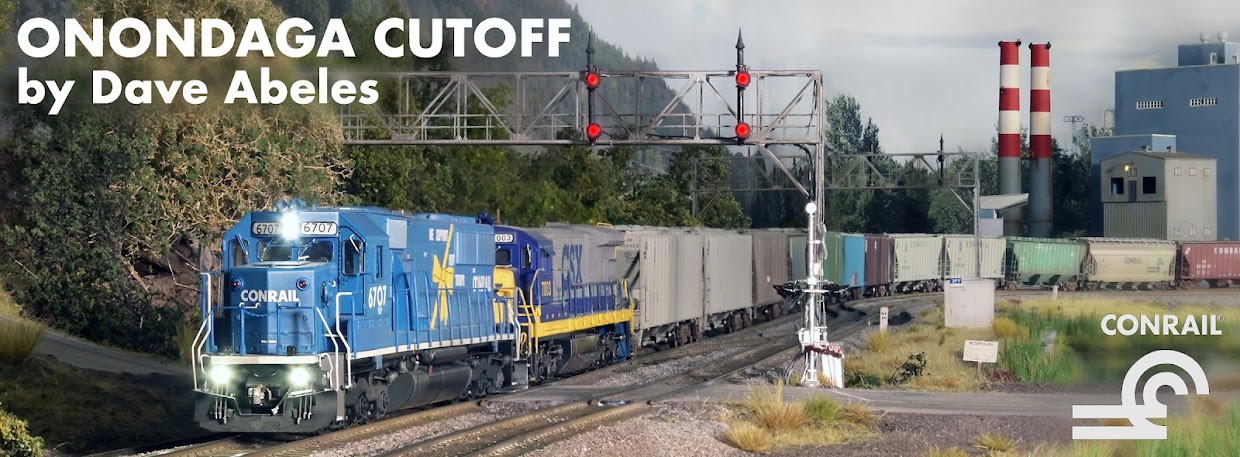As we have discussed over the years, I feel that scenery is best accomplished in layers. While the Onondaga Cutoff operation continues, scenery can grow in organically, spreading across the layout in layers that allow your mind's eye to grow along with the scenery itself. Industrial scenes, just like rural scenes, require some vision of where we want to get to, but that vision changes once the base layer is in.
For Onondaga Engine Terminal (ONET), I began by adding a 'concrete' apron across the front of the engine house. The kit was built and installed early in the process since the rails run through the drop-floor casting, and so a hole was cut in the subroadbed to fit the enginehouse. I refereed to prototype photos of Conrail engine houses at Dewitt and Selkirk for guidance on the dimensions of the concrete slabs and how the track was located through the troughs. Composite hardboard made a good choice for the appearance of weathered concrete.
Dark gray grout was then spread across the yard and engine house trackage, with a hefty addition of 'Black Cinders' from Arizona Rock & Mineral. All of that was soaked with isopropl alcohol and diluted matte medium, and allowed to dry for 24 hours.
Weathering is a critical aspect of any prototype layout, and track is no exception. Engine house tracks are gritty, greasy, oily, and grimy, with oil- and grease-soaked locomotive sand and ballast. Even when well-maintained, these tracks are filthy! Arizona Rock & Mineral sells an 'Asphalt Paving Powder' that is a dead ringer for oil-soaked sand when piled about the center of the track, and the same firm's 'Gray Base Powder' is a nice stand-in for fresh locomotive sand that has been spilled here and there, adding nice highlights to the dark grit of the base.
After the engine yard was curing, it was time to tackle the maintenance yard, used to store maintenance equipment, snow-removal plows and spreaders, and the fuel delivery track. Here, I again used dark gray grout and black cinders, and added some 'Yard Mix' from Arizona Rock & Mineral as well to suggest track less soaked with oil. Some fresher gray ballast was added where the cabooses are stored as this would be a spot with more personnel about.
Once the area cured for 24 hours, I added some miscellaneous weeds for contrast, and then lined up all the MOW equipment once again.
What a difference some ballast and ground cover makes! While more subtle than some other recent scenery additions, it's satisfying to get this scene to a more final look. This sets up the stage for progress further east where some major scenery installations are coming soon.
As the hot, humid summer days pass once again, I am thankful for the time I can spend in the cool basement at the end of each day making some progress and sharing it with all of you. Enjoy the summer and check back soon for more updates!
~RGDave







No comments:
Post a Comment